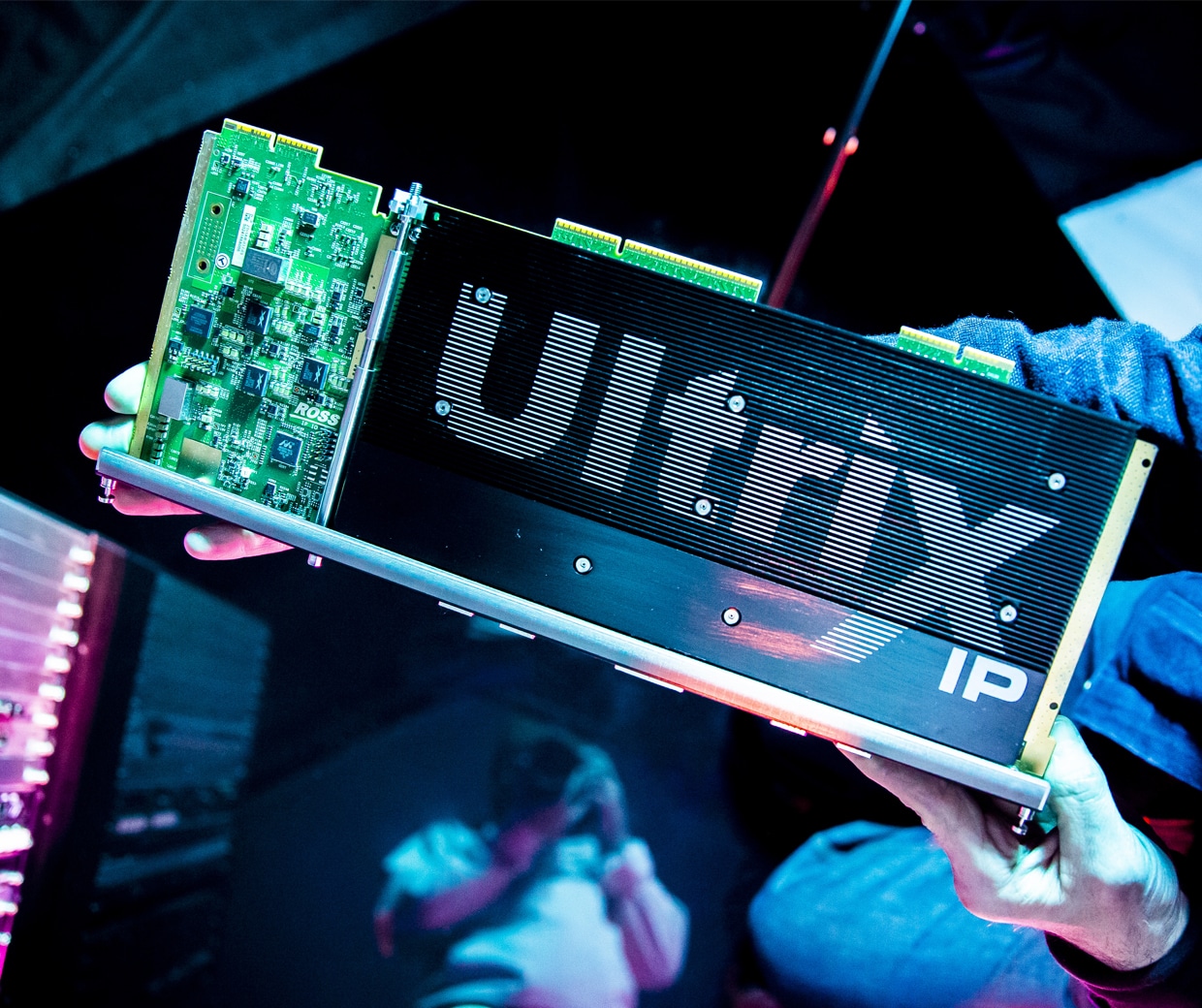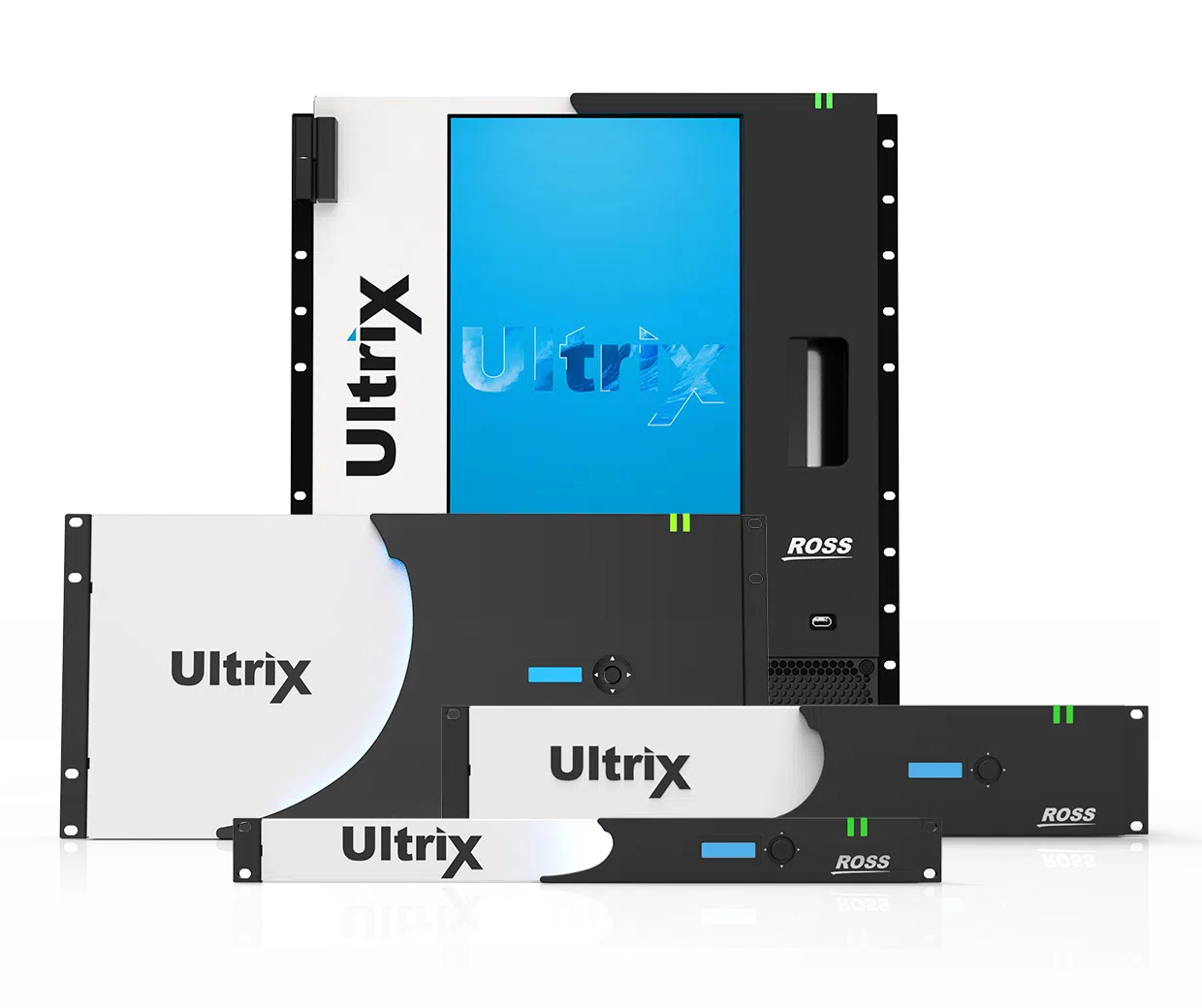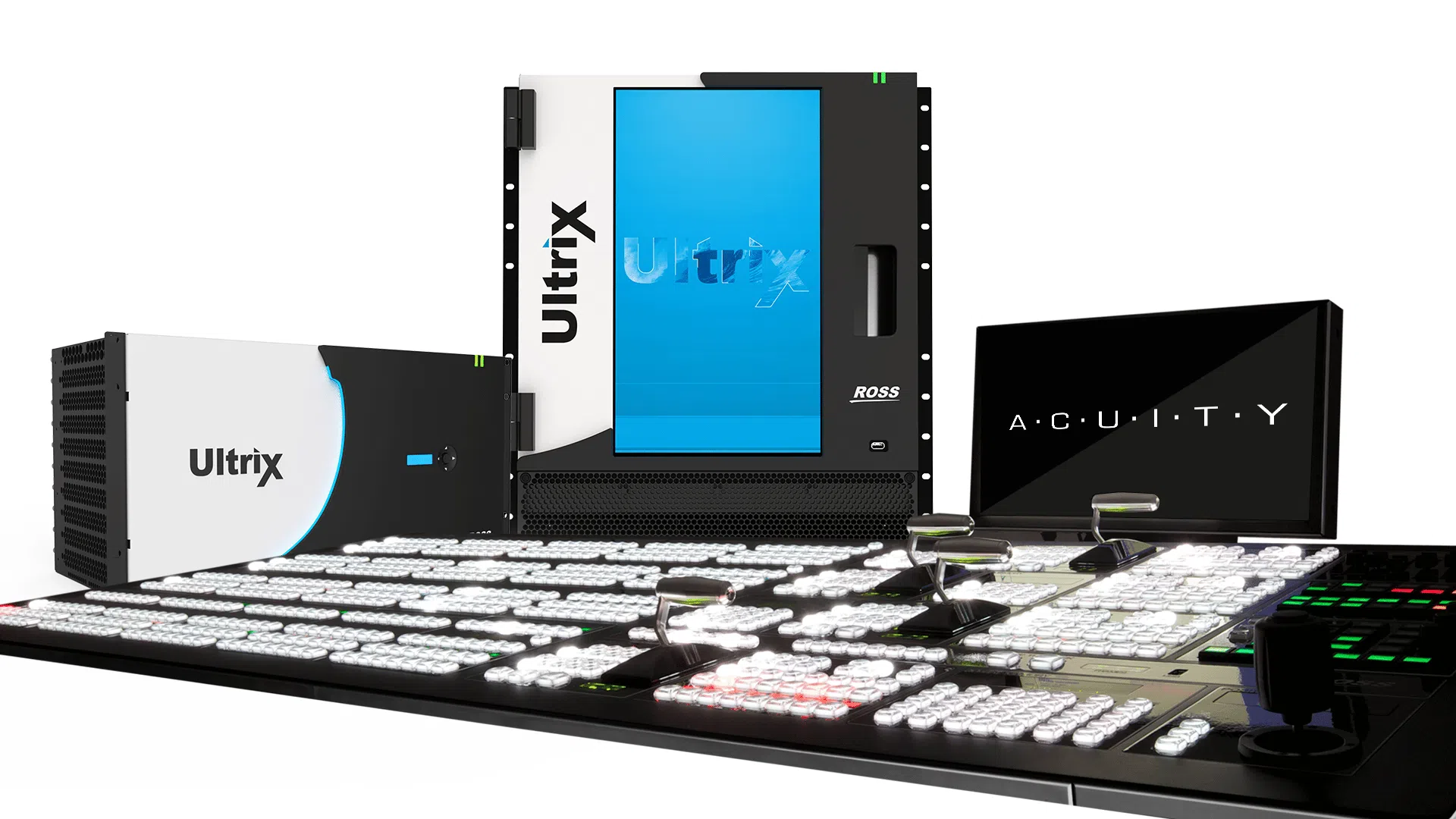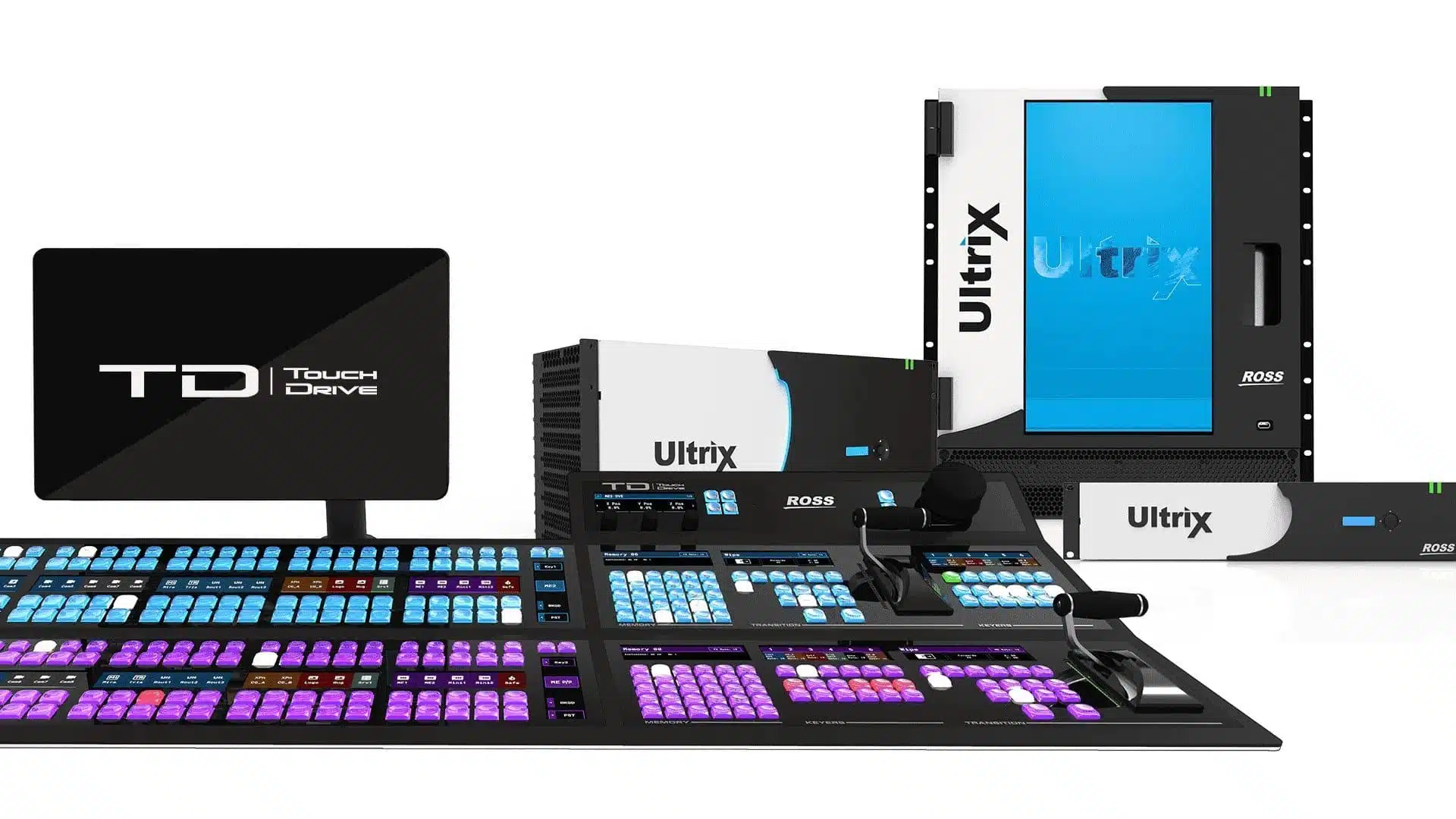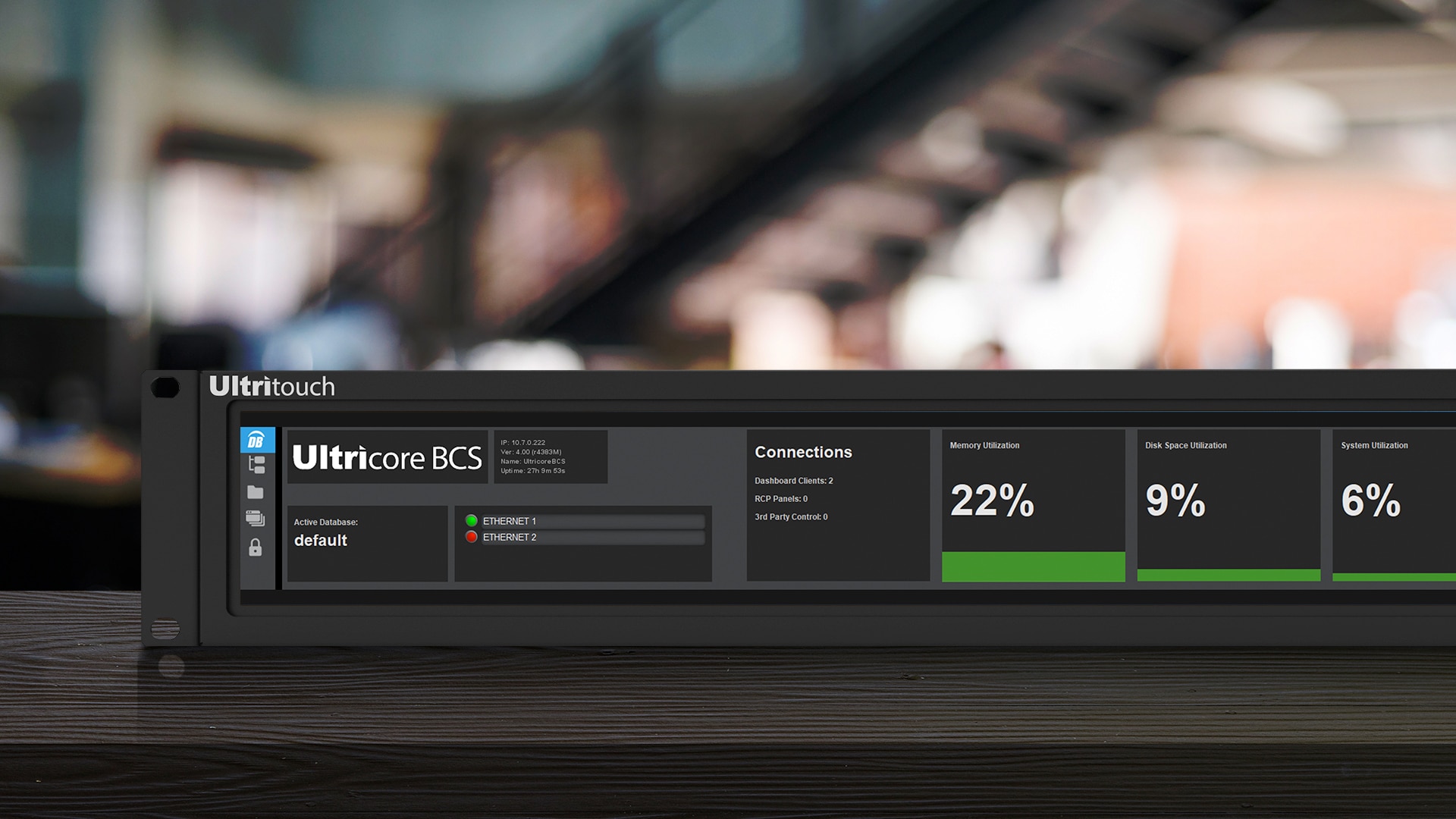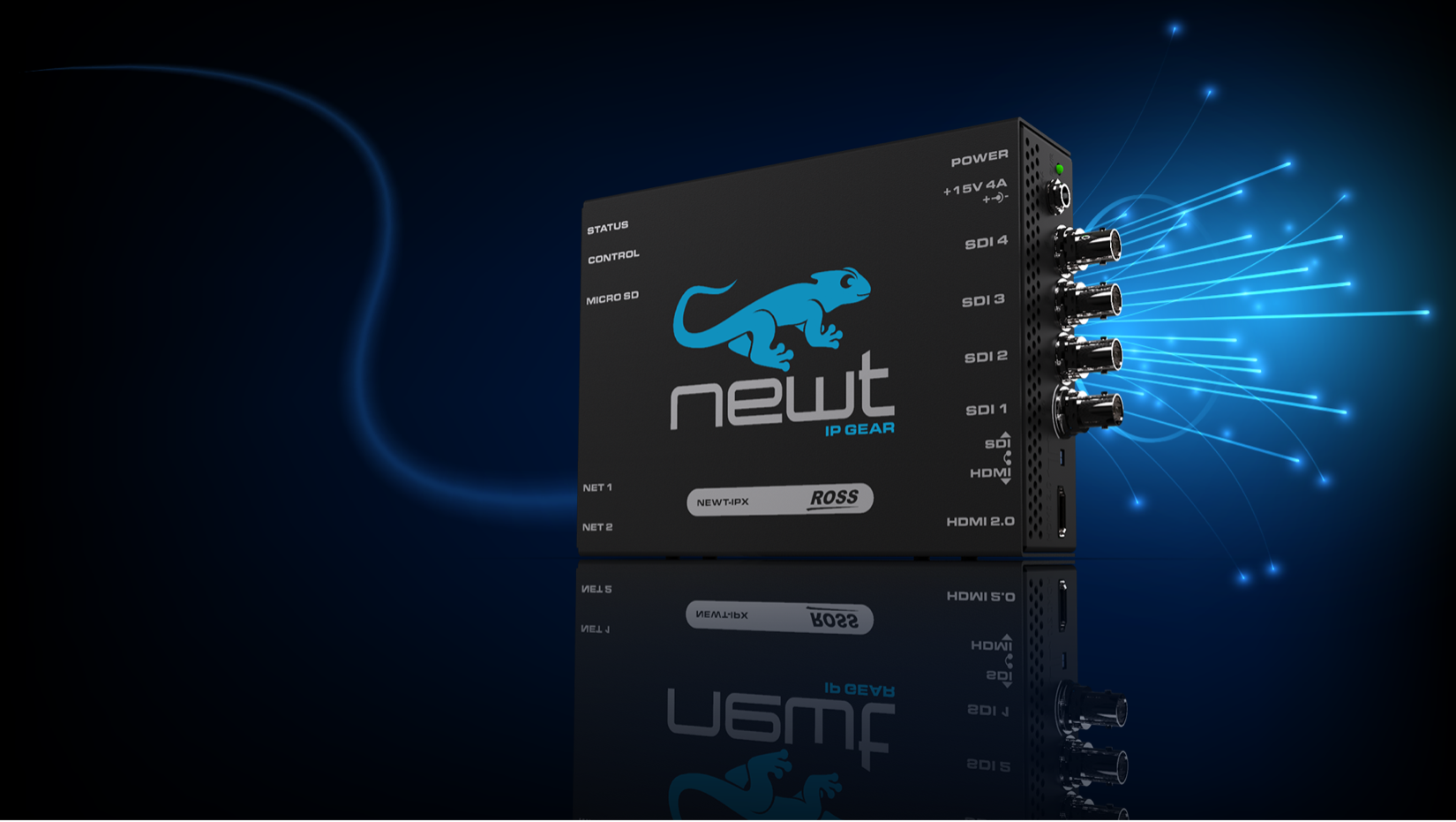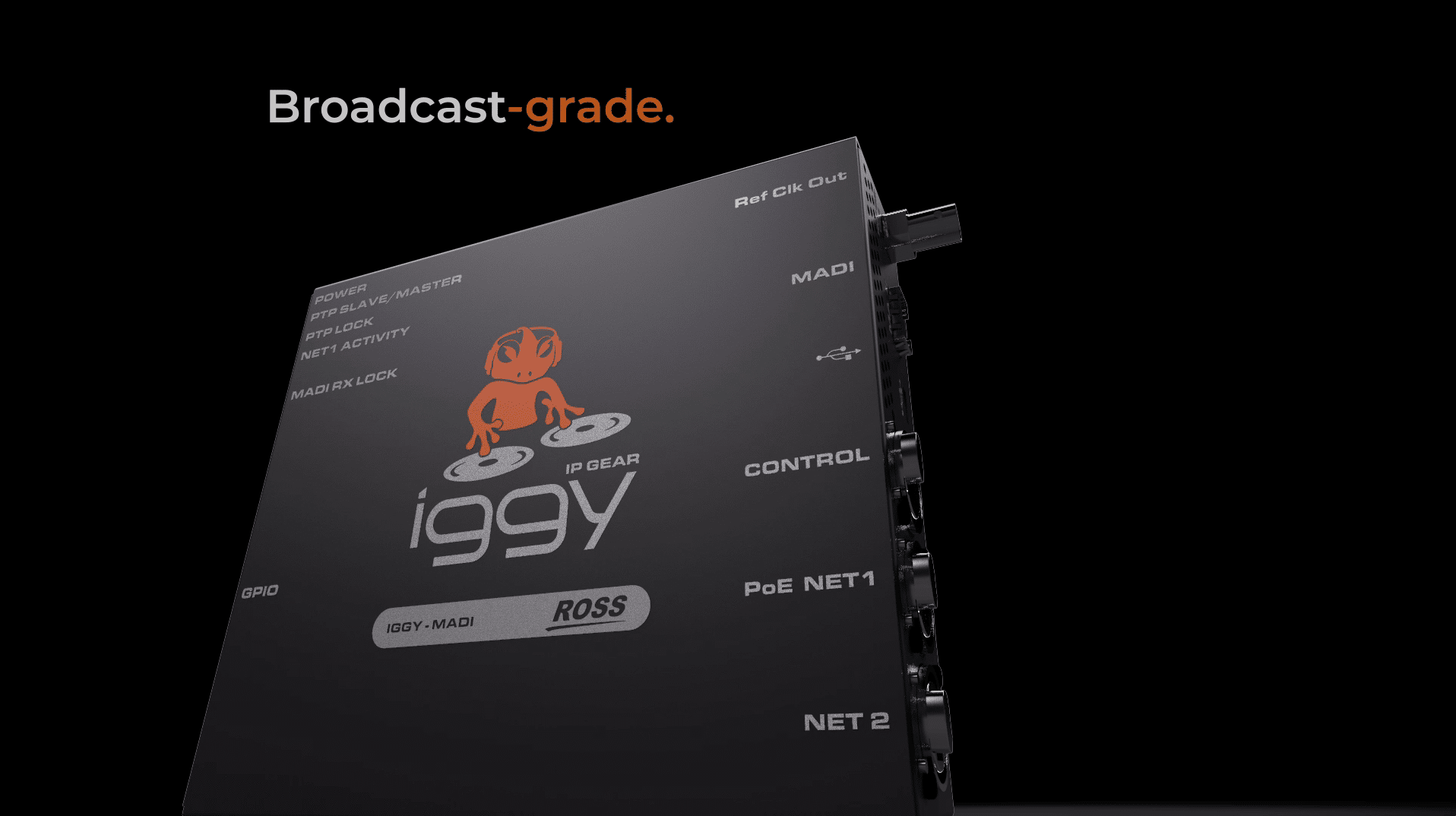USE CASE
IP – ST 2110 Solutions
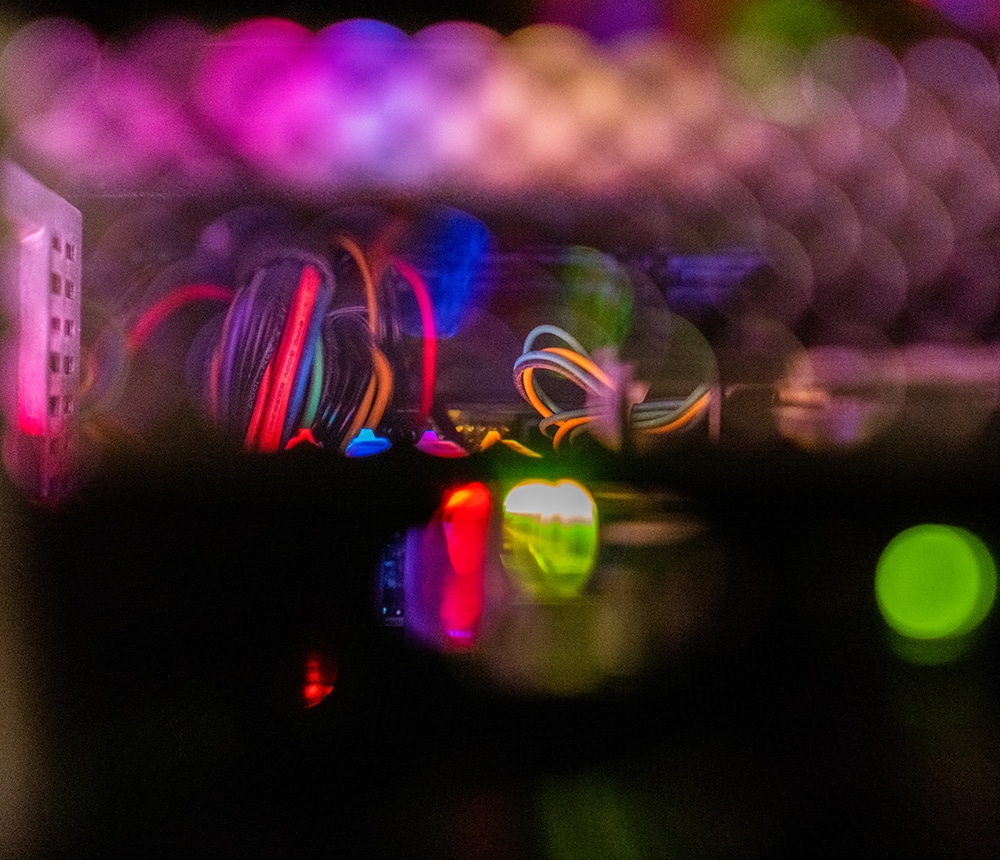
AT A GLANCE
IP Production Using ST 2110
There is much excitement around the potential of IP connected systems to create more flexible, agile, and scalable production environments.
Ross is a leader in IP connectivity with in-house core technology development for key popular technology standards including SMPTE ST 2110 and AES67 technology, while continuing to push forward with SDI connected environments at the same time. Hybrid IP/SDI environments will be the norm for the foreseeable future in live production as system engineers leverage the best that each technology has to offer.
Whether IP or SDI, agility comes from flexible processing engines with software-defined feature sets. This offers agile, multi-function processing hardware that can add functionality through software licenses. The benefits are a flexible and scalable pool of resources that can grow as your needs change.
Scalability
A well-designed IP fabric utilizing ST 2110 allows linear growth beyond the limits of traditional SDI topologies. IP fabrics can be sized to accommodate the largest of facilities and offer more flexible growth than fixed-size baseband routing solutions.
Flexibility / Hybrid
Leverage IP for the flexibility and scalability in the core, but still retain the simplified interconnect that an SDI infrastructure offers. Interconnecting SDI islands with local routing to an enterprise-wide IP fabric provides the best of both worlds while protecting existing equipment investment.
Unified Control
Control of your infrastructure needs to be intuitive, regardless of the underlying architecture. A unified control system can manage SDI, IP, and hybrid installations. Integrated tielines and path-finding bridge signals between domains seamlessly allowing operators to get signals where they need with ease.
Less Cables
ST 2110 IP infrastructure enables multiple signals per cable carried on lightweight optical fiber. This significantly reduces the space, weight and cable management overhead of traditional infrastructures.
Format Agnostic
Traditional systems employ dedicated infrastructure for each signal type. With IP infrastructures, the endpoint maps any content to standard IP packets, allowing the core connectivity to be agnostic to the signal types. This allows new signal types to be introduced to the fabric without infrastructure changes.
Virtual and Software Processing
IP infrastructures simplify the integration of software processing and virtualization. Common network interfaces on generic processing hardware provide access to any media on the network, unlocking the flexibility of software-based media processing.
Hyperconverged Connectivity
Ultrix is the heart of a hybrid connected workflow enabling seamless connectivity between IP, SDI, or fiber signals. This hyperconverged platform also brings multiviewers, signal processing, audio production and video production together within an IP or hybrid installations giving your installation the benefits of smaller footprint, efficiency and simplified deployment.
Monitoring Anywhere
IP networks make it possible to provide any signal, of any type, anywhere. Newt and Iggy point-of-use IP gateways allow easy monitoring of these signals in compact easy-to-deploy packages.
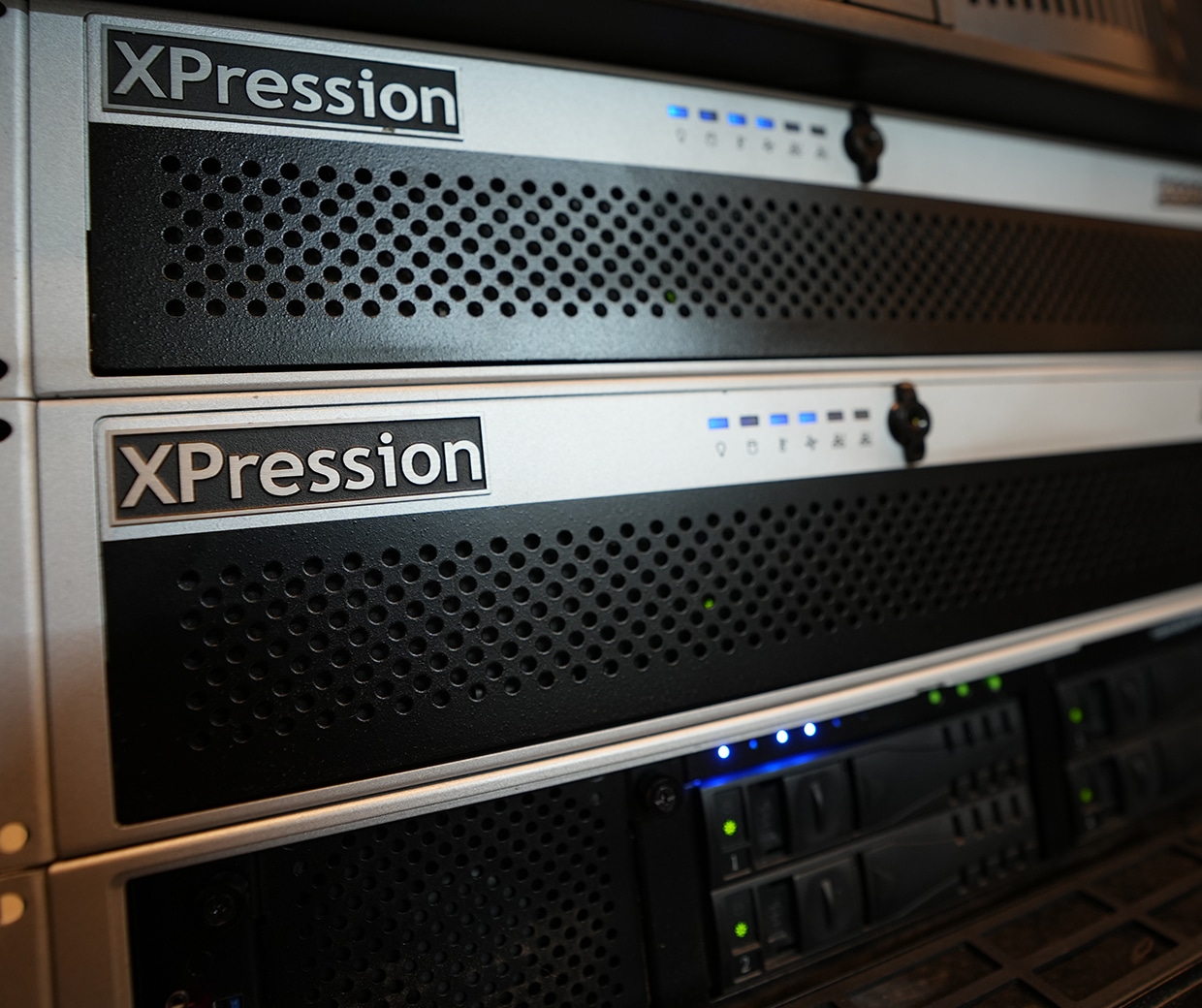
Content Creation and Playout
Large operations can leverage the benefit of shared resources connected on a high-availability IP routing fabric. This enables large productions to leverage more media content integration while also allowing a greater number of small productions to create more content. XPression graphics and MediaIO playout natively connect to ST 2110 networks, making it easy to allocate the resources required for each production on-the-fly.
Integrated Control in Hybrid Workflow
Ultricore BCS provides a unified control experience for IP, SDI, and hybrid workflows. With integrated Ultricore TLX intelligent tie lines, operators can route any signal between SDI and IP domains transparently. Control can be easily mapped to DashBoard soft panels, Ultritouch smart panels or traditional hardware-based control panels, allowing production crews to focus on the job of production rather than navigating the infrastructure.
SOLUTIONS
End to End Solution
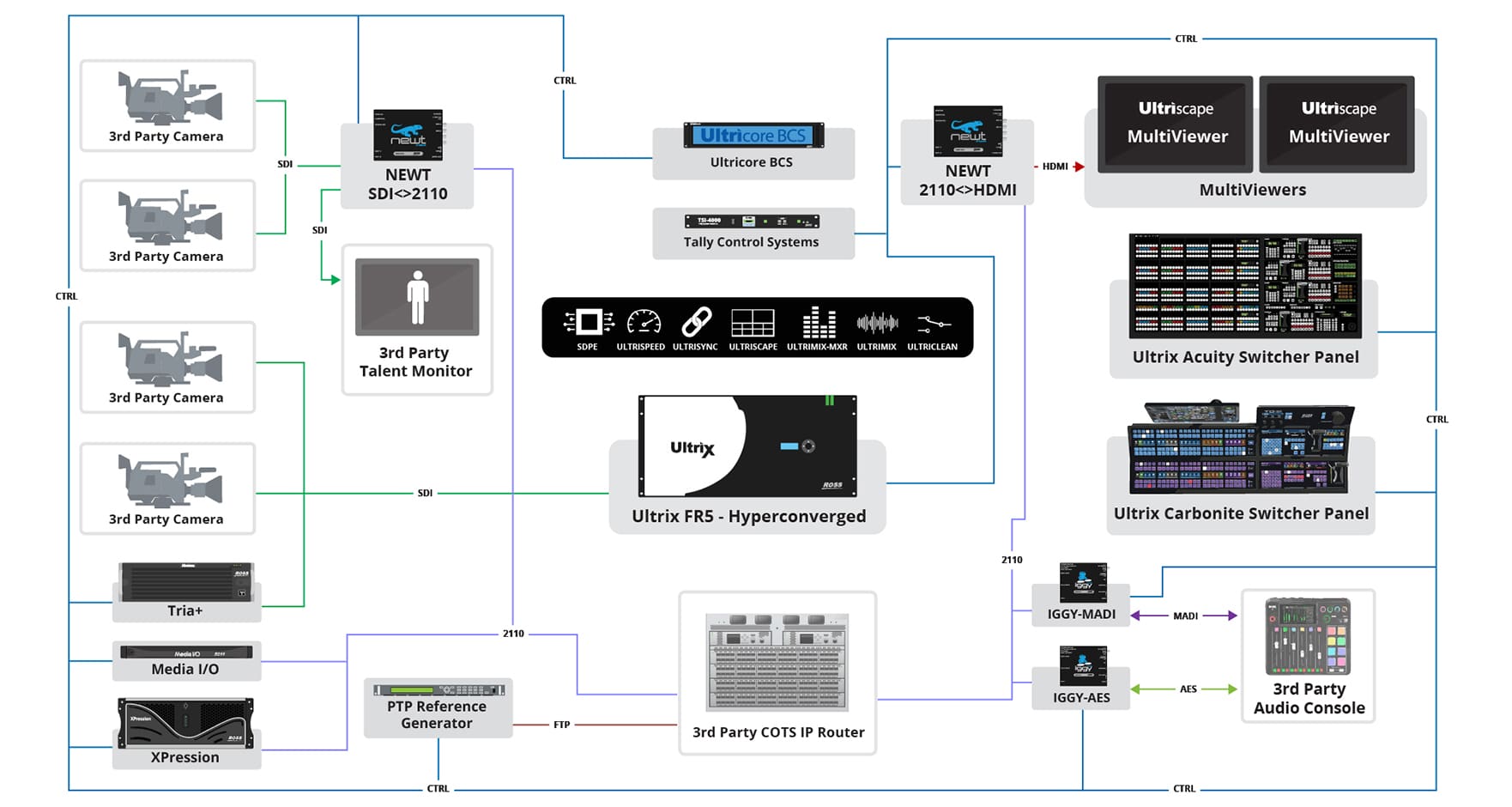
Ultrix
Software Defined Platform
- 1RU | 2RU | 5RU
- SMPTE 2110 IP Blade = 16X16 2022-7 in 3G | UHD = 8×8 or
- 4×4 in 2022-7
- SDI / IP Gateway
- IP Multiviewer
- Hyperconverged with Acuity and Carbonite
Ultrix Acuity
Hyperconverged Production Switcher
- Uses Software Defined Production Engine for Each ME (occupies 1 slot each)
- HD / 3G / UHD
- Up to 4 MEs | 6 Keywers per ME
- Supports Mix of Baseband & IP Sources
- Supports all Ultrix Software Defined Features
- Add I/O by Trading MEs
- Access to all I/O
Ultrix Carbonite
Hyperconverged Production Switcher
- Uses Software Defined Production Engine for Entire Switcher (occupies 1 slot)
- 18 Input Carbonite Ultra Embedded in Ultrix Frame
- Supports All Ultrix Software and Hardware Options
Ultricore-BCS
Control System
- Ultricore-BCS: Large Scale Control System
- Ultricore-IP: SMPTE 2110 Routing and Control
- Supports NMOS IS-04 & IS-05
- Optional Ember+ Support
- Dashboard and Ultritouch Control
XPression
Real-time Graphics
- Available in 1RU / 2RU / 4RU
- XPression Graphics Available with IP I/O
- All XPression Versions Supported
- SMPTE ST 2022-6/7 & ST 2110
- 10Gig or 25GbE Connections
- PTP or Black Burst Timing
Newt | Iggy
IP Conversion
Newt
- Compact IP to SDI and HDMI Conversion
- SMPTE 2110 & ST 2022 7
- Open Control, Including NMOS
- 4 x 3G-SDI or HDMI (I/O configurable)
- 1 x UHD HDMI 2.0
Iggy
- MADI <> AES-67 / SMPTE 2110
- AES <> AES-67 / SMPTE 2110
